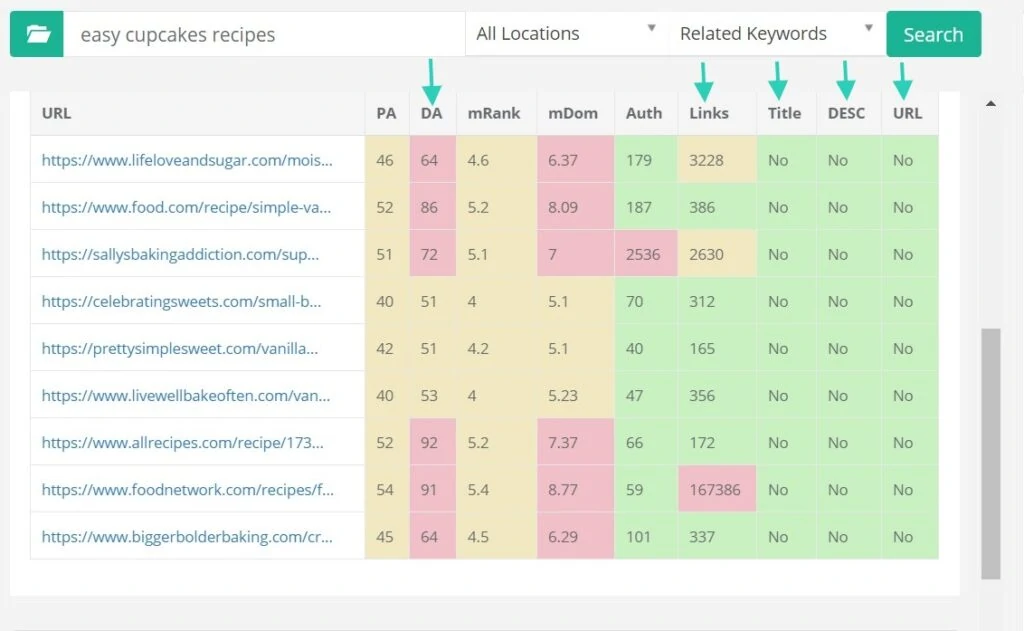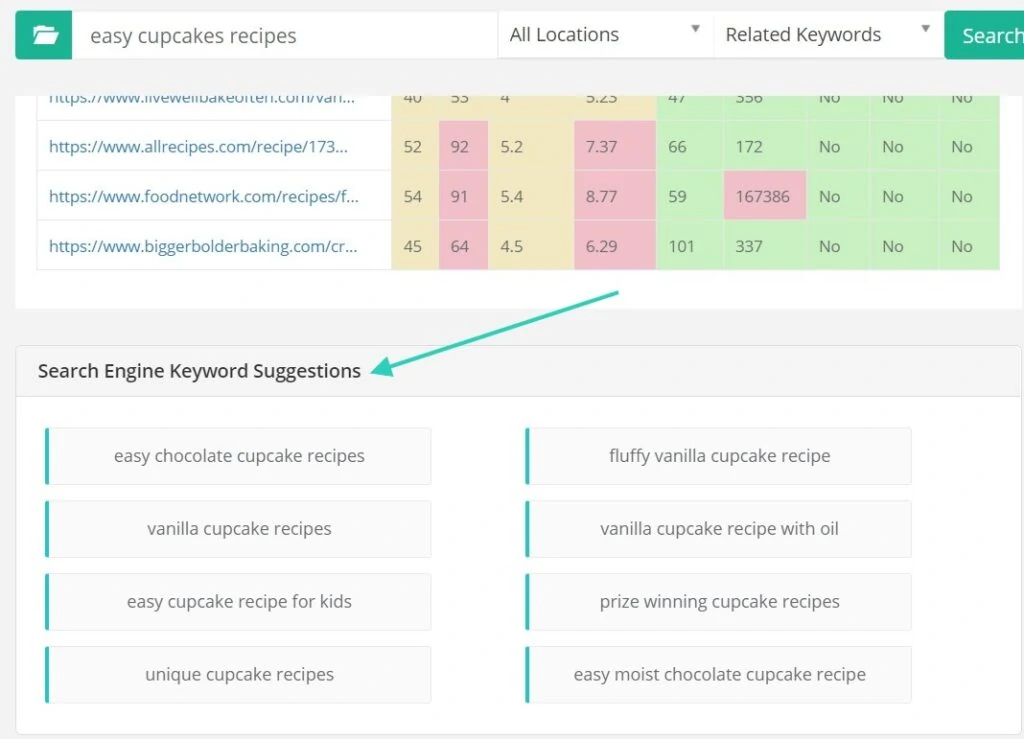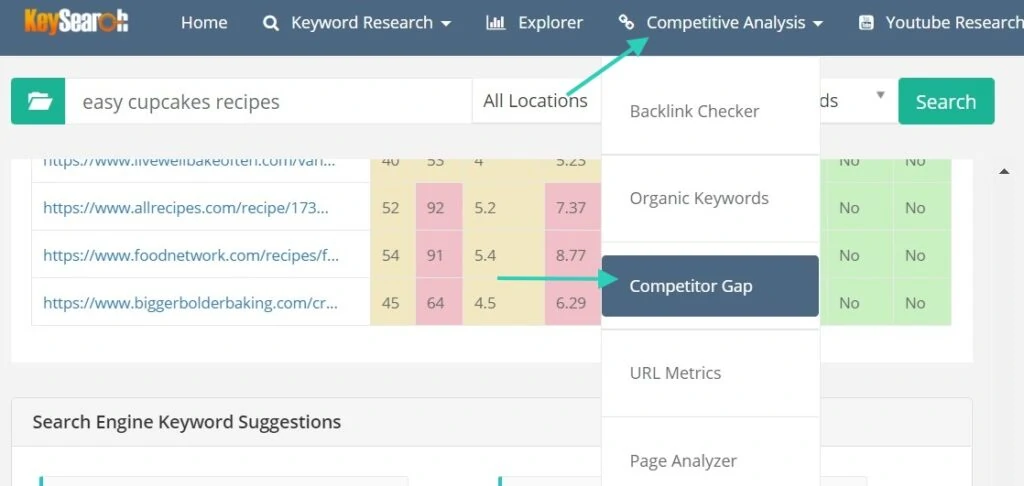Bloggers, if you finally decided it’s time to get traffic from search engines, you may have heard about keyword research.
Keyword research is an important step when it comes to writing a good blog post that gets traffic on autopilot. It’s the first step you should do if you wish to write content using SEO strategies.
In this post, I’ll keep it simple – Keysearch is an affordable keyword research tool to help you get more views on your website.
If you’re still very new at keyword research and SEO, keep reading to learn more about it. Otherwise, you can skip to the next section.
Why is keyword research important for bloggers?
What if I told you there was a way to predict the number of views you would get to your next article?
Well, there is a way and that is exactly what keyword research is.
So, let’s start with the basics by answering the famous question:
What is keyword research?
Keyword research is the process by which you find the popular search terms for a topic you wish to write about. The goal here is to find what people type into Google or any other search engine.
During this process, you can evaluate the competitiveness of these terms (we call them keywords) and you can strategically choose the one you think you can compete for with your current site metrics.
Once you picked the keywords you wish to target, you can add them to your content so you can appear higher on search engine result pages (SERP).
The higher you rank, the more traffic you will get to your website. Every blogger wishes to increase their views, and traffic coming from search engines is the best type of traffic. Why’s that?
Think of it as a sustainable and ongoing source of traffic. Once your content is out there, you won’t need to promote it on social media – you can simply count on your organic traffic.
Keysearch Overview
I’ve been using Keysearch since 2016 when I finally got into SEO. This keyword research tool is one of the most affordable on the market and it’s the most accurate tool I used during these years.
It allows me to identify keywords to target for my websites, to spot content gaps and opportunities.
While I don’t use all Keysearch features, I’ve played around with this tool for several years now. In this post, I’ll focus on the most useful features available in Keysearch.
Pricing
Keysearch offers two different plans. Let’s see the main differences between both.
Get a 20% discount when using this Keysearch coupon code: KSDISC.
| Keysearch Starter | Keysearch Pro |
|---|---|
| $17 per month or $169 per year | $34 per month or $279 per year |
| 200 daily searches | 500 daily searches |
| Rank tracker keywords: 80 | Rank tracker keywords: 200 |
That said, unless you run multiple websites or run an SEO agency, the Pro version isn’t necessary.
Usually, I do keyword research for a few articles in advance, but I only ran out of daily searches once.
You can also try Keysearch for free with a limited amount of credit so you can play around before committing to it.
Keysearch Alternatives
There are other keyword research tools out there, and I’ve tried a few over the years. Somehow, I always go back to Keysearch since it’s easier to use and I find the data to be more accurate especially in the travel niche.
To give you an idea, here are some Keysearch alternatives including their monthly price.
- Ahrefs: $99 per month
- Ubersuggest: $12 per month
- KWfinder: $29 per month
How to Use Keysearch to Find Keywords
The most important feature with Keysearch is obviously the keyword research tool which you’ll find in the top menu by clicking on Keyword Research.
If you need visual support for this process, I’d invite you to watch this Keysearch tutorial.
Here you’ll find a step-by-step guide to finding keywords in Keysearch.
Step #1
Write your keyword in the search bar at the top. Make sure to select “All locations” and “Related keywords”. Click on “Search”.
Step #2
Take a look at the volume and the score on the right side of your screen.
The volume represents the average number of monthly searches for this term.
The score represents the level of difficulty for this term. There, you can notice a color and a number. This gives you a quick overview of the difficulty of a keyword, but you should still pay attention to other elements.
To give you an idea, here are the six colors you can expect to see in the score column.
- Light blue: Competition is very easy
- Light green: Competition is fairly easy
- Green: Competition is easy-moderate
- Yellow: Competition is moderate
- Light red: Competition is fairly difficult
- Red: Competition is very difficult
Under the chosen term, you’ll see a list of related keywords. You can click the button “Check” to investigate them. Or, you could select multiple options and click on “Bulk Check”.
If you want to take note of one keyword, you can select it and click on “Save Keywords”. This way, you can have a list of relevant keywords related to a topic.
Step #3
Look at the top results on the left side. These are the current results on the first page of Google. You should pay attention to the following:
- The DA column, which refers to the Domain Authority of the website listed.
- The Links column, which tells you how many links the page has. In short, the more links, the harder is going to be to beat a competitor.
- The Title, DESC, URL columns, which tell you if the keyword was used within the Title, META description, and URL. (Although, you should note that sometimes this information is not always accurate.)
Step #4
When you select your keywords, you should ask yourself the following questions:
- Can you beat at least 2 or 3 results on the first page with your current domain authority?
- If not, do you think you can write better content than a few competitors?
- Are your competitors using the keyword chosen within the title, META and URL?
- Is the volume interesting?
- Is the score competitive?
If you realize you can’t compete for the keyword chosen, click on related keywords or click a keyword in the section called “Search Engine Keyword Suggestions” below the results to reset the search with new ideas and data.
How to Use the Competitive Analysis on Keysearch
One of my favorite features on Keysearch is the Competitor Gap analysis you can find under Competitive Analysis.
If you’re looking for new content ideas, this is a great way to find more keywords to target.
Step #1
Enter the URL from a competitor and make sure to select “Entire Domain”.
Step #2
Enter your own URL in the second field that says “But the following target doesn’t rank for” and select “Entire Domain”. Then, you can click on “Search”.
Step #3
Go through the list and search for the keyword difficulty and volume as learned in the previous section and identify keyword opportunities.
Keysearch Features
Keysearch has lots of features. While I don’t use all of them, there are some cool ones that are worth mentioning.
- You can save keywords to “My Lists”. This way you don’t need to save them anywhere else. It’s user-friendly!
- You can use the function “Brainstorm” and check the latest trends. You could get new content ideas this way.
- You can find keyword opportunities for your videos, thanks to the “Youtube Research” option.
- You can track your pages and keywords with the “Rank Tracking”. Just remember that if you opt for the starter plan, you’ll have a maximum of credits for this option. You may want to focus on your most important pages/keywords.
- You can also use the “Content Assistant” function to get more information on related keywords, related questions, snippet opportunities, and to find the length of content for the top results.
Final Thoughts
Finally, Keysearch is an affordable tool that provides accurate data. More importantly, it’s easy to use. I use it on a weekly basis and it did make a huge difference in my blog traffic.
Keyword research is an important step if you wish to get more views but also if you want to grow your blog by using SEO strategies.
I strongly recommend it and I keep going back to it even though I have access to other SEO tools. For me, it’s simply is the easiest one to use.
Want to give Keysearch a try? Get a 20% discount when you sign up with the coupon code: KSDISC.










